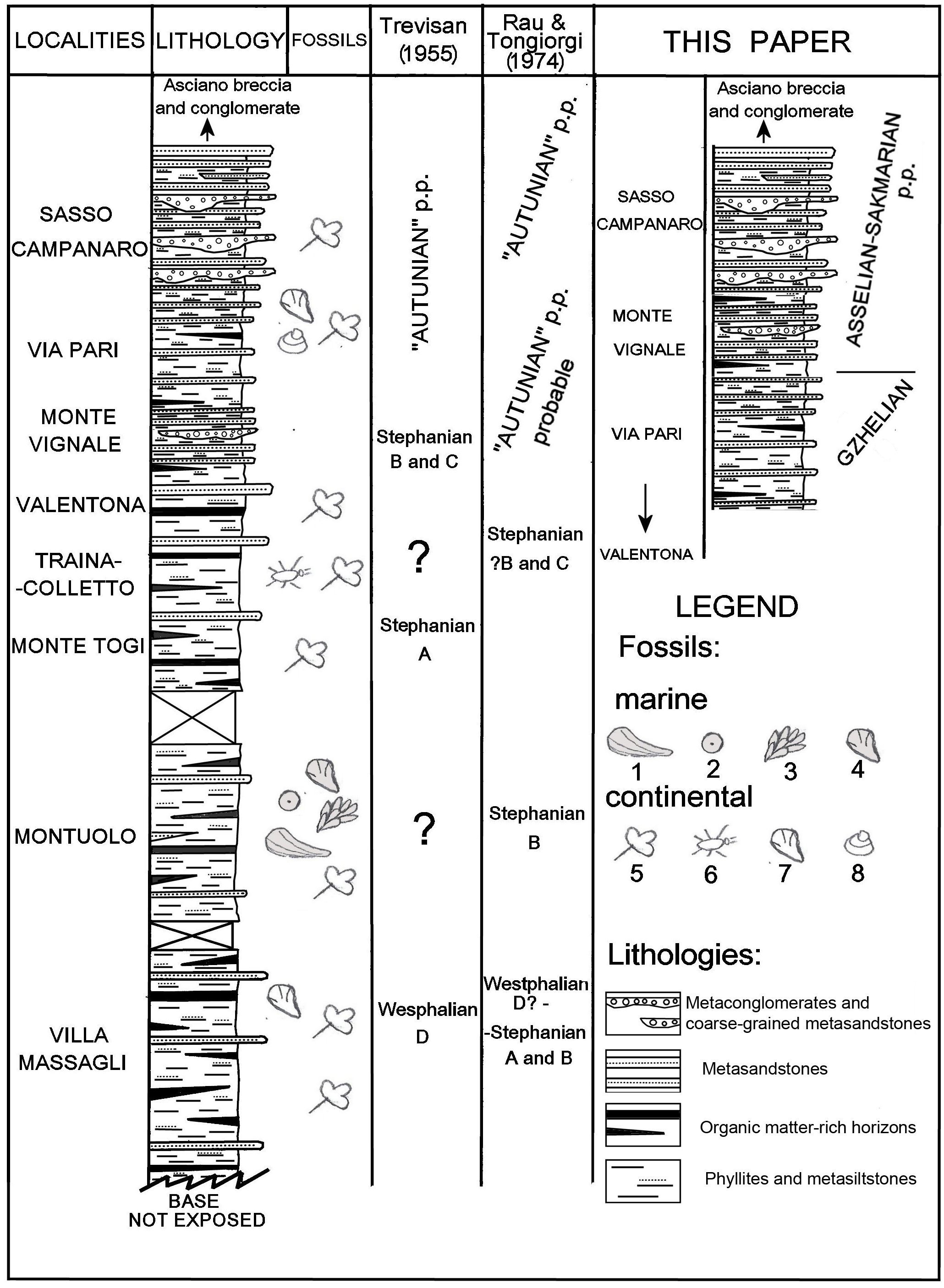CARBONIFEROUS PLANT FOSSILS FROM THE SAN LORENZO SCHISTS (PISANI MOUNTAINS, TUSCANY, ITALY): A PRELIMINARY STUDY OF THE PALAEOBOTANICAL COLLECTION OF THE MUSEO NATURALISTICO ARCHEOLOGICO DELL’APPENNINO PISTOIESE
DOI:
https://doi.org/10.13130/2039-4942/15843Keywords:
Pennsylvanian; Central Italy; plant fossil collection; palaeoenvironmental reconstruction; Northern ApenninesAbstract
The Museo Naturalistico Archeologico dell’Appennino Pistoiese (MUNAP) hosts one of the most abundant and diverse collections of Late Palaeozoic plant fossils from the San Lorenzo Schists of the Pisani Mountains. More than 1200 rock slabs yielding plant fossils were collected from six different outcrops in Guappero Valley in the San Lorenzo a Vaccoli area (NE of the Pisani Mountains, near Lucca), the type-locality of the formation. The present study concerns two outcrops at Via Pari that are characterized by a wide range of plant fossils (20 taxa) belonging to the lycopsids (Stigmaria), sphenopsids (Calamites, Asterophyllites, Calamostachys, Sphenophyllum, Bowmanites), ferns (Acitheca, Diplazites, Cyathocarpus), seed ferns (Alethopteris, ?Autunia, gen. indet.), cordaites (Cordaites) and seeds (Carpolithes). This first description of the plant fossil collection and the revision of its stratigraphical context with respect to the surrounding famous fossiliferous sections of the Guappero Valley refine the stratigraphic and palaeoenvironmental framework of the Late Palaeozoic successions of the Pisani Mts. and more generally of the Apennine chain. The qualitative and quantitative analyses show significant environmental variations between neighbouring outcrops in the Via Pari area – i.e., more humid conditions in ‘Via Pari Buca’ than in ‘Via Pari Smottamento’ – and suggest a latest Carboniferous (Gzhelian) instead of an early Permian age as proposed by previous authors. Moreover, the differences in composition between the plant assemblages of the Via Pari sections with the historical assemblage of the nearby Monte Vignale outcrop (containing typical Permian and more xerophytic elements) in the De Stefani Collection of the Florence Natural History Museum is explained by a younger age (early Permian) of the latter.
Metrics

Downloads
Additional Files
Published
Versions
- 2021-06-28 (2)
- 2021-06-25 (1)
Issue
Section
License
Copyright (c) 2021 FRANCESCO SABATINI, ENRICO PANDELI, EVELYN KUSTATSCHER

This work is licensed under a Creative Commons Attribution-NonCommercial-NoDerivatives 4.0 International License.
The journal allow the author(s) to hold the copyright without restrictions.






